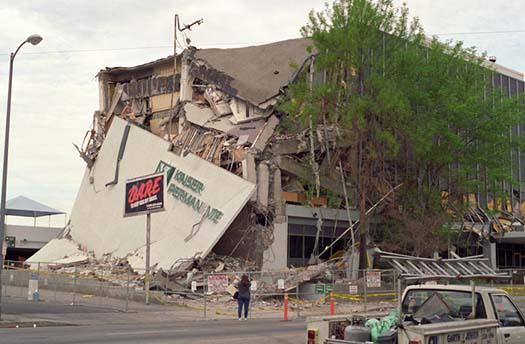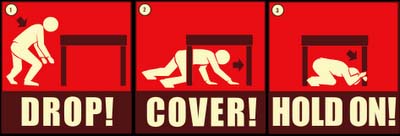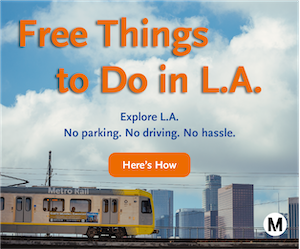
You never know when the “big one” is gong to hit. That’s the tough part, right? The sheer unpredictability alone scares most people, not to mention the total lack of control once the shaking starts.
But perhaps more frightening is how little we do to prepare for an earthquake before anything bad ever happens. After all, there is a 67% chance in the next thirty years we’ll be hit by a 6.7 or higher quake in the L.A. area. So what are we doing to stay ready?
Well, at the very least, we can get the conversation started.
In the aftermath of the La Habra earthquake, Digital L.A. put together a quick panel on earthquake preparedness, featuring an LAFD public information officer and a host of concerned citizens who really just wanted to know: What can we do to be better prepared for an earthquake when it hits?
Nice job @DigitalLA putting this #LAquake preparedness event together and the @LAFD for providing great info pic.twitter.com/qu1qnF0PEu
— We Like L.A. (@WeLikeLA) April 2, 2014
What I’d like to do in the below post is simply pass along some of the information we gathered at the meeting, starting with putting together your own earthquake kit, and listing out some resources and best practices to follow to make sure you’re able to get through a quake as safely as possible.
Hope it helps!
Your Earthquake Preparedness Kit
It’s amazing how many people you probably know who don’t have an earthquake or emergency kit on the ready. The LAFD specifically says that it wants our citizens to be self sufficient for 72 hours after an emergency, which means if you’re doing your due diligence, you need to put a kit together ASAP.
To that end, here’s the RedCross Official list of supplies to be on hand post-emergency. In a future post, I may discuss putting this kit together in real life (like a step-by-step) but for now, I think the list itself will be a good starting point:
Water—one gallon per person, per day (3-day supply for evacuation, 2-week supply for home)
Food—non-perishable, easy-to-prepare items (3-day supply for evacuation, 2-week supply for home)
Flashlight
Battery-powered or hand-crank radio (NOAA Weather Radio, if possible)
Extra batteries
First aid kit
Medications (7-day supply) and medical items
Multi-purpose tool
Sanitation and personal hygiene items
Copies of personal documents (medication list and pertinent medical information, proof of address, deed/lease to home, passports, birth certificates, insurance policies)
Cell phone with chargers
Family and emergency contact information
Extra cash
Emergency blanket
Map(s) of the area
This list is not comprehensive for everyone (like if you have pets and need to have food on hand) but it’s a great start, and if you put it together you’re probably ahead of 90% of the curve.
What to do When the Earthquake Hits
Simply put, the LAFD has a very straight forward procedure they advise when the shaking starts:
Drop. Cover. Hold on.

From the LAFD.org:
“One of the areas with the biggest misconception base is what to do when an earthquake strikes. People want to stand in doorways. Bad. The door can swing into you or crush your fingers. People want to run outside. No so good. Falling debris will injure or kill you. People want to jump under the closest table. Good! That’s a great place to hang out during an earthquake, but remember to hang on.”
In general there were a few other things that the Erik Brown, the LAFD public information officer who attended our meeting, wanted to get across to the public.
1. When an earthquake hits, the most important thing is to be aware of your surroundings and use common sense.
2. Check your home for obvious earthquake danger points, like bookshelves above beds. Be sure to properly secure items that hang on walls. Preventable accidents are one thing that the LAFD can’t help you with after the fact.
3. If you’re driving a vehicle and feel an earthquake, signal your intentions, then pull over to the side of the road. Be aware of the unexpected.
4. If you smell gas after an earthquake, immediately leave the premises and call 911.
5. Make it a priority to take responsibility for your own safety. Don’t wait until something bad happens to get prepared!
The Digital Perspective
Another central function of the meeting this past week was to discuss the importance of how we get our information post-quake. What online sources do we turn to? How do we use technology and Twitter in the midst of an earthquake disaster?
To that end, I’ve linked below a summary of the sources that we talked about as guide to getting prepared and/or subscribe to in order to stay informed after a quake hits.
Twitter:
A Twitter list to subscribe to for earthquake information in the Los Angeles area
Instructions on how to use SMS messages in an emergency to access Twitter.
Generally, the hashtag #LAquake will be the one that the LAFD helps to spread news about an earthquake in it’s aftermath, so be sure to check that hash if you’re looking for up to date information in the midst of a major earthquake.
Web:
Nixle.com (to subscribe for police alerts)
Ready.gov (general earthquake preparedness)
Mobile:
Earthquake Alert App (for Android)
Being a Good Neighbor
As Alan Silberberg pointed out during our meeting, one additional challenge we face that sometimes we don’t even consider is the digital divide of information in terms of who knows what’s going on when, and how that information is accessed across a wide spectrum of the population.
If you’re reading this blog post, you’re probably pretty well connected in the digital sense, but do you know someone who doesn’t use Twitter? Or Email? Or even a cell phone? Those, especially the elderly, who don’t have access to technology are at greater risk when a disaster strikes. This is where it falls on the community to pick up the slack, check on friends and neighbors, and spread credible information.
Furthermore, while our local disaster services are incredibly well trained for emergency response on a mass scale, it can take hours or even days before they can get to everyone, depending on the scale of the disaster. This is where good neighbors become more important than ever.
Just like on an airplane, once you secure yourself, make sure those around you are squared away as well. The more we help each other, the easier we’ll be able to get through any type of disaster, regardless of the scale.
In that spirit, I hope this post contributed in some small way!
Cheers, be safe, and if you have anything to add to the conversation, please let us know in the comments below!
[Photo Credit: Wikipedia]
Brian is the co-founder of We Like L.A. and a lifelong fan of puns, the Lakers, and late night tacos. Follow him on Twitter @bchampLA



